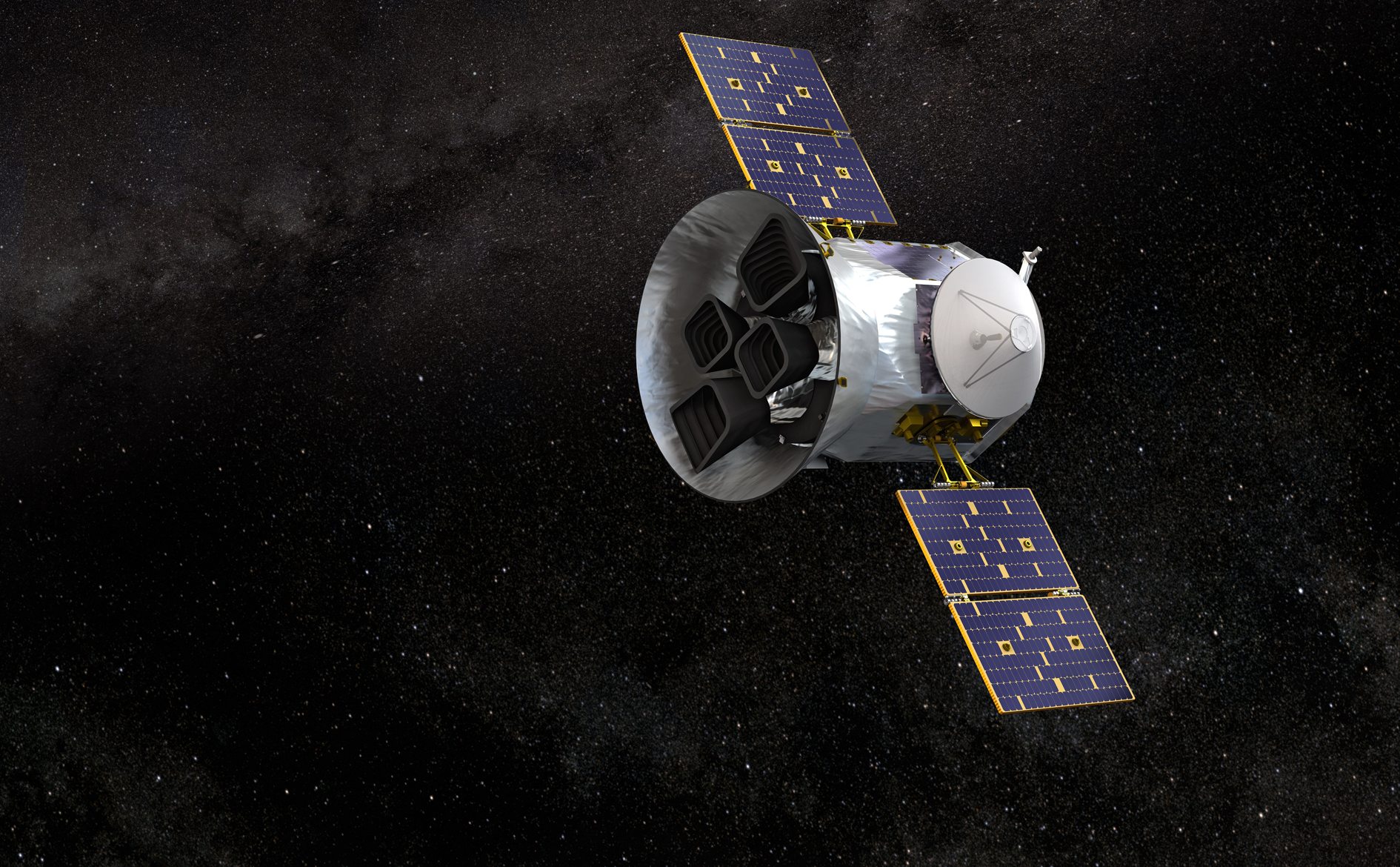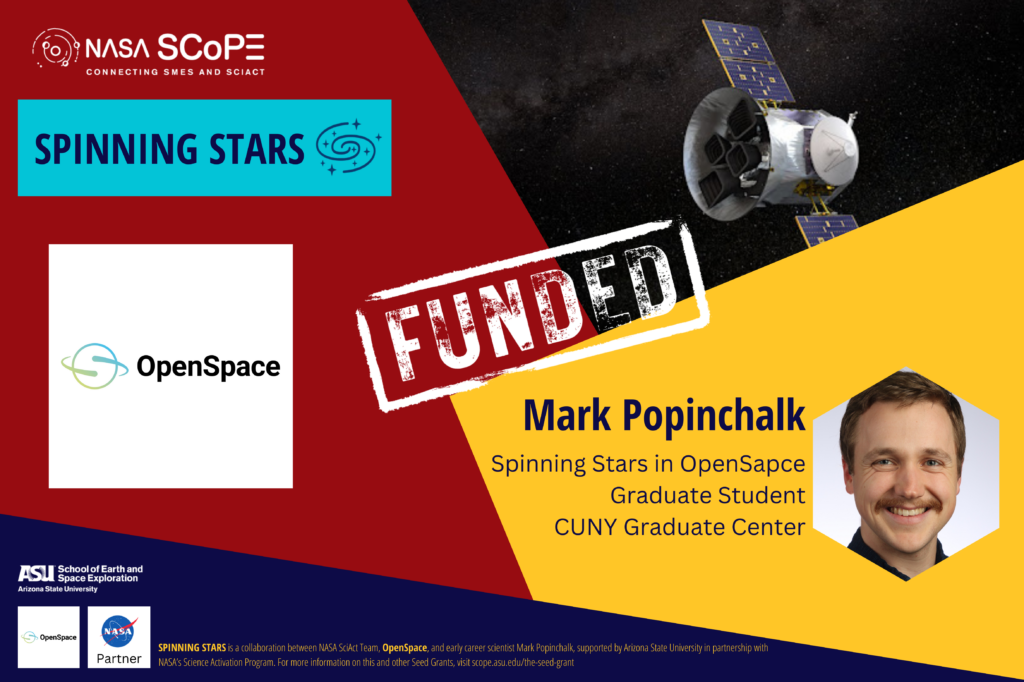
Mark Popinchalk
2023 Seed Grant Awardee
Project Description
Spinning Stars in OpenSpace

Age and time are challenging concepts to convey when teaching astronomy as the timescales involved range from thousands to billions of years, all of which are far beyond the scope of human experience. Our research group at the American Museum of Natural History (AMNH) uses the NASA Transiting Exoplanet Space Satellite (TESS) to determine the ages of stars. Like a top spinning on a table, stars will slow down over their lifetimes, therefore making spin rate an age related observable.
The OpenSpace team at AMNH are world leaders in planetarium software and astro-visualization. Our project is to incorporate the results from our work using TESS into the OpenSpace planetarium software. Then, we will develop a planetarium program guide that showcases the TESS dataset among other discoveries to demonstrate various timescales in our galaxy.
Target Audience Age
| 0-4 | 5-10 | 11-14 | 14-18 | 19-22 | 23-26 | 27-99 |
NASA Division

Astro
Grant Status

Learning Context

Digital Learning

Neighborhood /
Community

Informal /
Out of School

Home / Family

Citizen Science

Formal Education
SME Bio

A good scientist is a good communicator, but it's a real treat to find a way to communicate our science to the public.
Mark Popinchalk
Spinning Stars PI
Graduate Student
CUNY Graduate Center
Mark Popinchalk is a British/American PhD student at CUNY and AMNH currently working on rotation rates of low mass stars in K2. He has also worked on projects involving synthetic Brown Dwarf spectra, and transiting exoplanets.
Before joining BDNYC he worked for four years as a Science Educator at the AMNH. He continues his passion for outreach by co-hosting Astronomy on Tap NYC and as a planetarium presenter at the Hayden Planetarium. He enjoys Ultimate Frisbee, all kinds of games, and writing about himself in the third person.
SciAct Team

OpenSpace Description
Funded in part by NASA, OpenSpace brings the latest techniques from data visualization research to the general public. OpenSpace supports interactive presentation of dynamic data from observations, simulations, and space mission planning and operations. OpenSpace works on multiple operating systems, with an extensible architecture powering high resolution tiled displays and planetarium domes, and makes use of the latest graphic card technologies for rapid data throughput. In addition, OpenSpace enables simultaneous connections across the globe, creating opportunity for shared experiences among audiences worldwide.

OpenSpace is a pipeline for disseminating NASA data and visualized content. This collaboration supports the needs of our SciAct project by bringing scientific data from the NASA Transiting Exoplanet Space Satellite (TESS) into OpenSpace software.